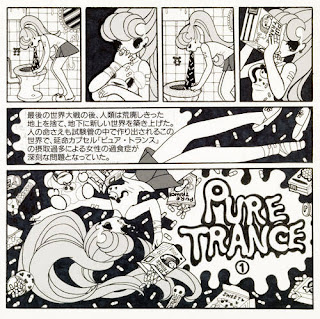Junko Mizuno is a Japanese new
manga artist.
Mizuno's drawing style, which mixes childish sweetness and cuteness with
blood
and terror has been termed a Gothic kawaii or kawaii noir
style. In addition to her comics, she designs T-shirts,
calendars,
postcards,
and other collectibles. Some of Junko Mizuno's designs were used in the
documentary series Japanorama, which aired on BBC.
Mizuno has participated in the Angoulême International Comics
Festival.
Last Gasp
and Viz Comics
are the English-language publishers of her work.
Mizuno provides the art that accompanies the horoscopes in Shojo Beat
magazine.
Mizuno has stated that her work is influenced by shōjo manga
works; this influence is exhibited through her use of bright colorization and
the large eyes she provides for her characters .Her art has a
decidedly pop-art
and psychedelic
flair, and a sizable proportion of her published work is colored, rather than
the black and white format typical of most Japanese comics.
Works
- Cinderalla, (Koushinsya, 1995); English ed. Viz, (2002).
- "The Life of Momongo," story by Norimizu Ameya, Comic
Cue, (East Press, 1998); reprinted in Chikao Shiratori, (ed.), Secret
Comics Japan, (Viz, 2000).
- Pure Trance, (East
Press [Tokyo], 1998); English ed. Last Gasp, (2005).
- Hansel & Gretel, (Koushinsya, 2000); English ed. Viz, (2003).
- Junko
Mizuno's Hell Babies, (Kenichi
Kawai/Pan-Exotica, 2001).
- Princess Mermaid, (Bunkasha, 2002); English ed. Viz, (2003).
- Collector's
File 002: Junko Mizuno's Illustration Book, (Viz, 2003).
- Little Fluffy Gigolo Pelu, (Enterbrain, 2003-2005); English ed. Last Gasp (2009-).
































